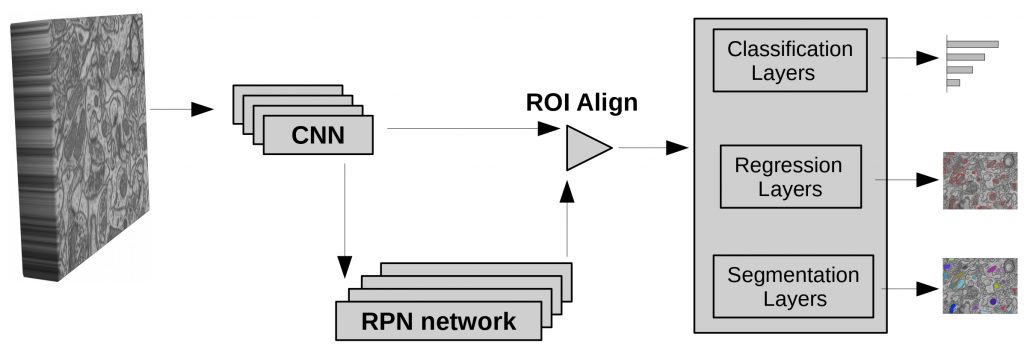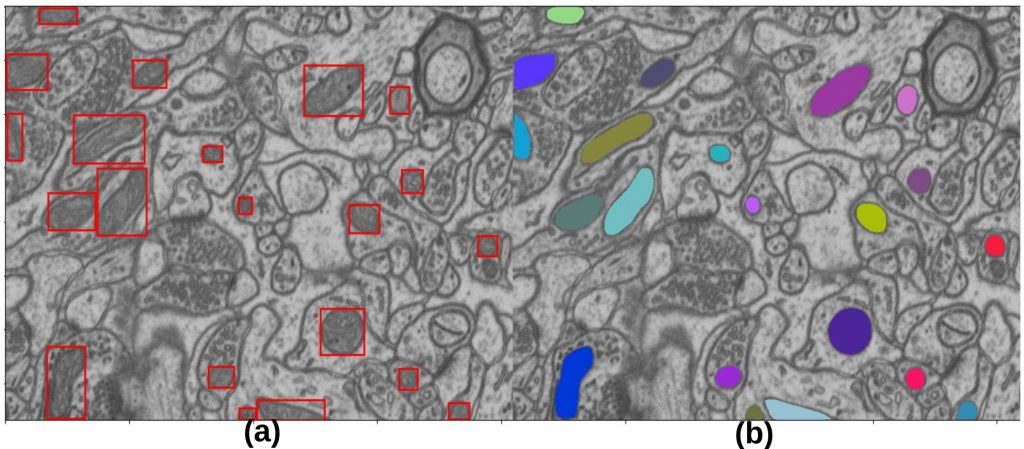Introduction
In computer science, object detection, or localization, is a computer vision technique that aims to detect instances of semantic objects within digital images or videos using deep-learning methods. Over the years, object detection techniques such as Faster R-CNN, RetinaNet, Mask R-CNN, and variants of the Yolo algorithm have gained significant attention in various domains such as autonomous driving, video surveillance, healthcare, agriculture, and more. The primary goal of object detection is to accurately locate the position and size of one or more objects in a given image or video while also classifying these objects to describe what they represent if possible.
Summary of Mask R-CNN
Mask R-CNN is an advanced two-stage object detection algorithm that combines object localization with instance segmentation tasks. It builds upon the Faster R-CNN framework by extending it to predict object masks in addition to bounding boxes and class labels by replacing the ROI max pooling layer of Faster R-CNN with a ROI align layer that provides more accurate sub-pixel level ROI pooling. Mask R-CNN utilizes a convolutional neural network (CNN) to generate a region proposal network (RPN) for object localization, as shown in Figure 1. The proposed regions are then refined, and object masks are predicted using a pixel-level segmentation network.

Figure 1: Mask R-CNN Model
Application to Medical Image Segmentation
In recent years, deep learning-based image segmentation algorithms, including U-Net and its variants, have shown remarkable success in medical imaging and other domains. Similarly, object detection algorithms like Mask R-CNN have been leveraged for medical image segmentation tasks. By adapting Mask R-CNN to medical images, it becomes possible to precisely locate and segment specific structures or regions of interest within the images as shown in Figure 2, where we first detect the multiple mitochondria objects (a) and then segment them (b). This enables more accurate analysis and interpretation of medical images, contributing to improved diagnostics and treatment planning, rather than just using pixel-wise segmentation techniques such as U-Net.

Figure 2: The mitochondria region of interest is detected and then segmented by utilizing Mask R-CNN two-stage object detection technique.
In conclusion, object detection algorithms such as Mask R-CNN, originally developed for general object detection tasks, have proven to be valuable tools for medical image segmentation. By combining object localization and instance segmentation, these algorithms enable precise identification and segmentation of objects within medical images, enhancing the understanding and analysis of complex anatomical structures.
